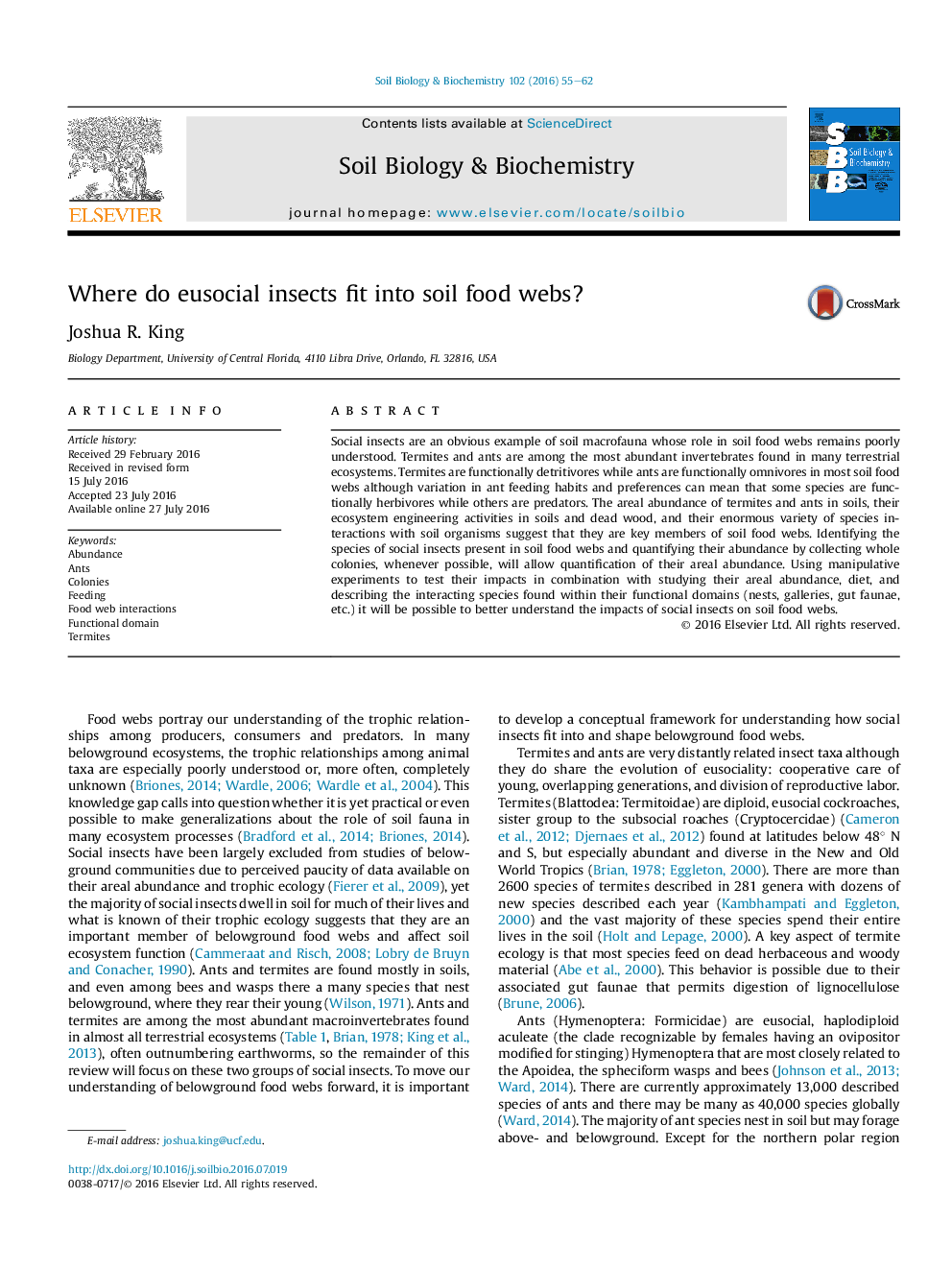| Article ID | Journal | Published Year | Pages | File Type |
|---|---|---|---|---|
| 5516558 | Soil Biology and Biochemistry | 2016 | 8 Pages |
•Ants and termites are highly abundant members of soil food webs.•Their impacts on soil food webs extend above- and belowground.•Whole colony experiments and diet studies are needed.•Study of the functional domains of ants and termites is a way forward.
Social insects are an obvious example of soil macrofauna whose role in soil food webs remains poorly understood. Termites and ants are among the most abundant invertebrates found in many terrestrial ecosystems. Termites are functionally detritivores while ants are functionally omnivores in most soil food webs although variation in ant feeding habits and preferences can mean that some species are functionally herbivores while others are predators. The areal abundance of termites and ants in soils, their ecosystem engineering activities in soils and dead wood, and their enormous variety of species interactions with soil organisms suggest that they are key members of soil food webs. Identifying the species of social insects present in soil food webs and quantifying their abundance by collecting whole colonies, whenever possible, will allow quantification of their areal abundance. Using manipulative experiments to test their impacts in combination with studying their areal abundance, diet, and describing the interacting species found within their functional domains (nests, galleries, gut faunae, etc.) it will be possible to better understand the impacts of social insects on soil food webs.
